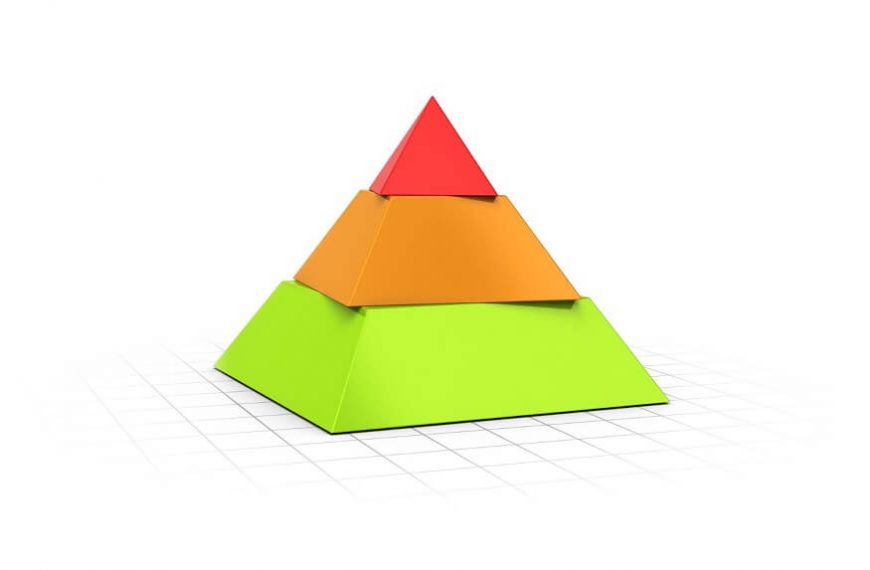Discover Mathematical Pyramids
The most famous pyramids of the world were built in ancient Egypt more than 4,500 years ago. That is not to say that pyramids are not found elsewhere. Mexico, South and Central America are all well known for their pyramids. Pyramid mathematics is extremely interesting and you may wonder — What is a pyramid in Math? A pyramid is a 3 dimensional shape with triangular sides that meet at the apex. But there’s much more to pyramids than this simple definition. The pyramids of Egypt make you realise how these structures were based on geometrical and mathematical equations which is the main reason that they are standing till date. What is even more amazing is the fact that the Egyptians were aware of these mathematical concepts way before the rest of the world.
Facts About Pyramids
We have brought together a few mathematical facts about pyramids that are sure to make it easier for kids to understand what a pyramid is in Math.
- The faces of a pyramid are always triangular. There are broadly 2 types of pyramids and a pyramid comprises one base and triangular faces. Whatever the shape of the base might be, the faces of the pyramid will always be triangular in shape. Usually, pyramid shapes have a square base and 4 triangular faces with 5 vertices and are known as square pyramids.
- The top of the pyramid is called its apex. All the faces of a pyramid meet at a common vertex at the top known as the apex. The vertex of a pyramid is the point where two or more edges meet. A pyramid is made by connecting a base to an apex, which is the highest point of the pyramid.
- A pyramid can have different shaped bases — rectangular base, triangular base, pentagonal base or a hexagonal shape. A pyramid is named after the shape of its base so a pyramid with a triangular base and 3 sides is called a triangular pyramid and a pyramid with a hexagonal shaped base and 6 triangular faces is called a hexagonal pyramid. In the same way, a pyramid with a square base and 4 sides is called a square pyramid while a pyramid with a triangular base and 3 sides is known as a tetrahedron. So contrary to popular opinion, there are several types of pyramids.
- There are 2 types of pyramids — regular pyramid and irregular pyramid. A regular pyramid has a base that has all its sides and angles equal and equal lateral faces. An irregular pyramid has an irregular shaped base with unequal sides and angles and different lateral faces.
- When the apex of the pyramid is directly over the centre of the base, it is called a Right Pyramid. When the apex does not align with the centre of the base, it is called an Oblique Pyramid.
- The Pyramids of Giza which are situated in Egypt are the best examples of pyramids and are the first thing that one thinks of when the word ‘pyramid’ is mentioned. But that’s not to say that the pyramid shape is not used elsewhere. Most tents are in a pyramid shape and the famous chocolate ‘Toberlone’ is in the shape of a pyramid too.
- The formula to calculate the volume of a pyramid is V=Bh➗3. This means that the volume can be calculated by multiplying the base and the height, then dividing the product by three. As the base is the product of the length and the width, the formula could also be written as V=lwh➗3.
Mathematical Facts About the Great Pyramid
Some of the mathematical facts about the Great Pyramid are evidence of how developed the mathematical and engineering skills of the Egyptians were, considering it was built close to 5 thousand years ago. This pyramid is a square pyramid as its base is square.
- The height of the pyramid was originally 146.59 m or 280 cubits and now due to erosion it is about 138.75 m. Its base is about 230.36 m or 440 cubits.
- A very interesting fact about this pyramid is that if you measure its base accurately and multiply it with 43,200 you get the exact equatorial circumference of the Earth. The scale of 43,200 is not a random number as it is derived from a key motion of the Earth called precision. The earth moves around its axis at 1 degree every 72 years.
- The shape of this pyramid is triangular so that the weight of the structure is distributed evenly. Most of the weight in a pyramid is concentrated at the bottom and decreases as you go higher. That is why this stone structure of an ancient civilization is still standing as it is extremely sturdy.
- The design of this pyramid is based on the foundations and principles of geometry and mathematics. It embodies the concept of Phi, the Golden Ratio that can be found everywhere in nature. It is also based on Pi, the circumference of a circle at its diameter and the Pythagoras Theorem.
- A pyramid constructed on Phi will vary by only 0.025 percent from the Great Pyramid’s dimensions.
- A pyramid constructed on the basis of Pi varies by only 0.1 percent from the Great Pyramid’s dimensions.
- A pyramid based on a constant gradient varies by only 0.8 percent from the Great Pyramid’s dimensions.
- Its near perfect alignment shows remarkable mathematical skills and that little was left to chance.
Maths is a word that many children find scary. But when you start relating it to the objects around you, it not only becomes more interesting but it also starts making more sense. Pyramid mathematics can be correlated to the pyramids of Egypt and also makes us realise how advanced the mathematical concepts were 5 thousand years ago. The pyramids are one of the wonders of the world and it is based on the principles of mathematics and geometry. For more information on mathematical pyramids, facts and about these unique structures, you can visit the EuroKids website and update your information.















